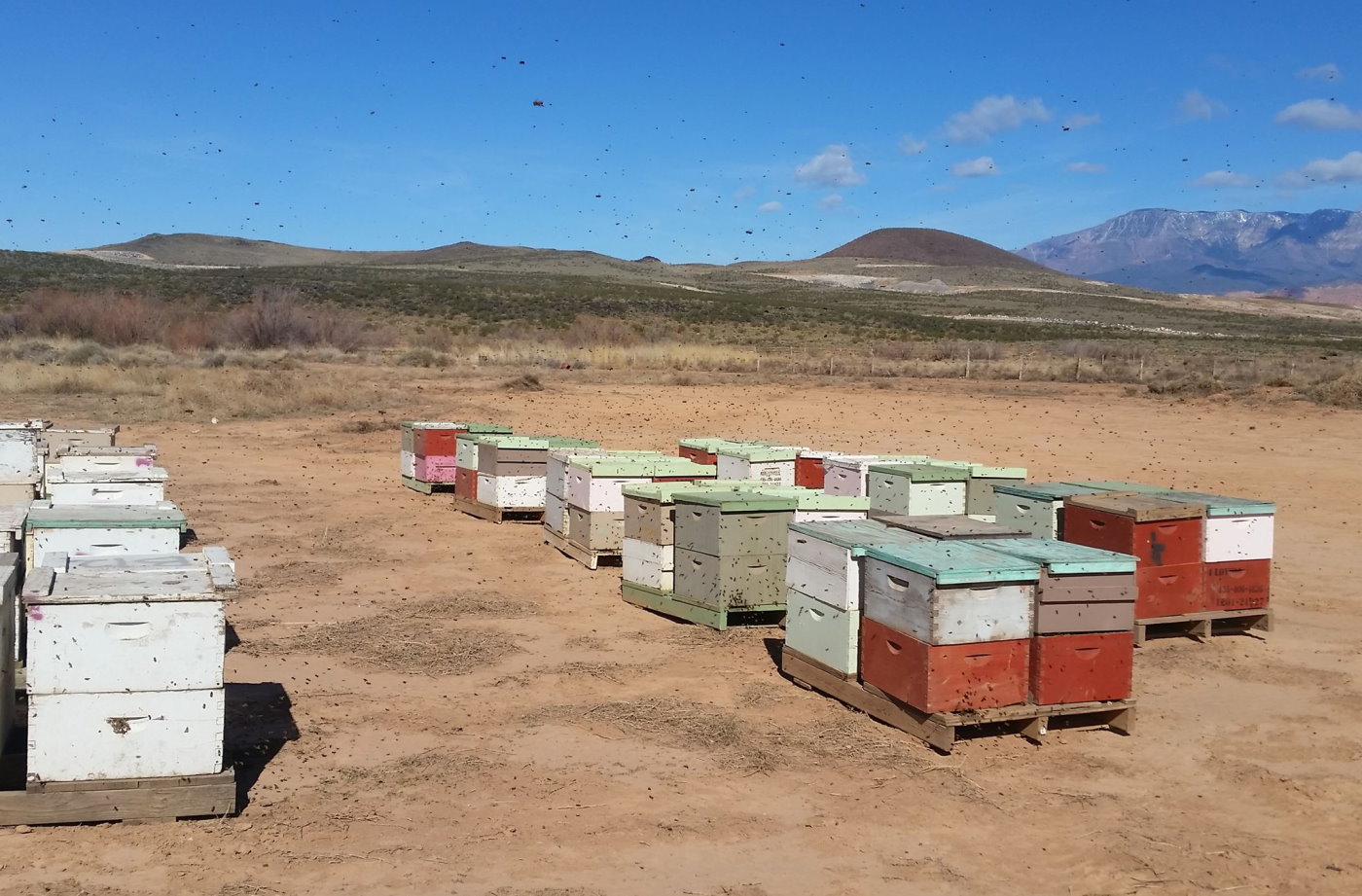Feeling the sting of theft, local beekeepers offer reward for information
ST. GEORGE – Area beekeepers are feeling the sting of theft and have come together to offer a reward for information leading to the arrest of whoever is responsible for tampering with their livelihood.
Frustrated with continuing instances of theft and vandalism, a group of Southern Utah beekeepers is offering $3,800 to the public to help stop the repeated acts of thievery.

“You can’t sustain bee business when you have to deal with theft because you’ll spend all of you profits to avoid it,” beekeeper Casey Lofthouse said.
Last week, Lofthouse, who also serves as the Washington County Bee Inspector, posted the $3,800 reward on his Facebook page following the discovery that some of his beehives had been tampered with and parts stolen. The reward is made up of the various amounts Lofthouse and other beekeepers have offered to help find the perpetrator.
“Stolen in Southern Utah and Kolob Mtn. Please share and help us find the scum that keeps stealing our livelihood! This has to be someone capable of extracting the honey,” Lofthouse wrote.
“Several beekeepers have noticed boxes missing here and there 4 or 5 honey supers, mini mating nucs with over 100 queens stolen this spring, misc equipment missing or tampered with. We do have game cameras on many of our yards.”
When asked how much he may have had stolen, Lofthouse said he wouldn’t know for certain until after checking other bee yards which are scattered across the county and beyond that. He and other beekeepers affected by the thefts also maintain bee yards in Iron and Kane counties.
This is a part of the problem, Lofthouse said. The beekeepers check on their bee yards once every few weeks, and in between that time someone can come in and steal honey boxes and other items. A beekeeper won’t know what’s happened until he visits the yard and notices his beehives have been tampered with or are missing.

Trail cameras have been set up to monitor some bee yards, Lofthouse said, but those also have limitations of not being checked often enough before their memory cards are full. Remote areas can also lack phone reception, making monitoring the cameras in real time an impossibility.
“Microchips and GPS is an option, but many times very expensive in excess of losses you may incur.” Lofthouse wrote on Facebook. “If it is on the box and they take individual frames it is of no use. Each hive consists of 10 frames per box and during honey production you could have 4 or 5 boxes deep. How can one afford to mark, track and account for every box and frame when your talking thousand of parts and pieces?”
In addition, it can be difficult to track stolen materials because bee-related items are similar from hive to hive. You may have your company name and logo on a beehive and the components inside, and all a thief seems to need to do is paint over them.

Police reports have been filed and more are possibly on the way with the future inspection of additional bee yards.
Inquiries submitted to the Washington County Sheriff’s Office and Hurricane City Police concerning beekeeping thefts had not been returned by the time of publication.
Lofthouse said a working beehive with honey boxes and a honey crop can net over $700. Each box of honey can also be around 40 pounds.
Jared Taylor, incoming president of the Utah Beekeepers Association, said a pound of honey can retail for around $10.
Part of the revenue the bees produce also comes through their use as pollinators, he said.
Taylor, who’s had hives and related items stolen, said it’s also frustrating when bee colonies in the hives are destroyed due to mishandling.
In some cases, the top of a beehive is removed to take out frames and then left open, exposing the hive to the elements. That results in the death of the hive and it can’t be recolonized until the following spring.
“When a hive dies out, it can take a full year to get that have back into production,” Taylor said. “There’s a lot of time invested in there, and time the most valuable thing you don’t get back.”

Thieves look to steal the honey crop and process it themselves for sale or use stolen bees to create a wider population that can be sold to other beekeepers.
“Sometimes it’s another beekeeper who thinks they have a right to our items,” Taylor said.
The public may not be aware of just who should be in a bee yard and who shouldn’t.
“Usually, when you see a beekeeper in a bee yard, you assume he belongs there because he has (a bee suit) on,” Taylor said.
However, if the public does see something suspicious or that looks out of place in a bee yard, they are encouraged to contact the local police.
“As beekeepers we’re going to be much more vigilant,” Taylor said. “It’s just a matter of time before we’re hit hard again.”
Lofhouse added, “We’re all dedicated to putting the word out that if you find somebody stealing bees, you’re going to have money in your hand.”
Email: mkessler@stgnews.com
Twitter: @MoriKessler
Copyright St. George News, SaintGeorgeUtah.com LLC, 2018, all rights reserved.